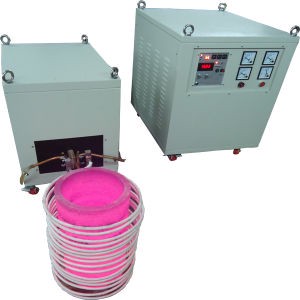Welcome!







Best Price 1400c Laboratory Chamber Furnace Muffle Furnace Heat Treatment of 3D Printed Metal Parts
Product Description
Metal heat treatment processes can generally be divided into three categories: overall heat treatment, surface heat treatment, and chemical heat treatment. Depending on the heating medium, heating temperature, and cooling method, each category can be divided into several different heat treatment processes. Using different heat treatment processes for the same metal can obtain different microstructures and thus have different properties. Steel is the most widely used metal in industry, and its microstructure is also the most complex. Therefore, there are various types of steel heat treatment processes. Integral heat treatment is a metal heat treatment process that heats the workpiece as a whole and then cools it at an appropriate rate to obtain the required metallographic structure to change its overall mechanical properties. There are four basic processes for the overall heat treatment of steel: annealing, normalizing, quenching, and tempering.

During metal heating, when the workpiece is exposed to the air, oxidation and decarburization often occur (i.e., the carbon content on the surface of steel parts decreases), which has a very adverse impact on the surface properties of the parts after heat treatment. Therefore, metals should generally be heated in a controlled or protective atmosphere, molten salt, and vacuum, and can also be protected by coating or packaging methods. Heating temperature is one of the important process parameters in heat treatment process. Choosing and controlling the heating temperature is the main issue to ensure the quality of heat treatment. The heating temperature varies depending on the metal material being processed and the purpose of heat treatment, but generally it is heated above the phase transformation temperature to obtain high-temperature tissue.




Recommended Products
Recently Viewed
 Factory Direct Sale Magnetic Bearing High Frequency Post Weld Heat Treatment
Factory Direct Sale Magnetic Bearing High Frequency Post Weld Heat Treatment Best Price 1400c Laboratory Chamber Furnace Muffle Furnace Heat Treatment of 3D Printed Metal Parts
Best Price 1400c Laboratory Chamber Furnace Muffle Furnace Heat Treatment of 3D Printed Metal Parts Factory Direct Sale Electric Muffle Furnace 1200cfor Heat Treatments
Factory Direct Sale Electric Muffle Furnace 1200cfor Heat Treatments Factory Direct Sale Precision Gear Hobbing Machinery Parts Reciprocating Hobbing Heat Treatment Surface Treatment Electroplating
Factory Direct Sale Precision Gear Hobbing Machinery Parts Reciprocating Hobbing Heat Treatment Surface Treatment Electroplating Customized Production 1400c Laboratory Chamber Furnace Muffle Furnace Heat Treatment of 3D Printed Metal Parts
Customized Production 1400c Laboratory Chamber Furnace Muffle Furnace Heat Treatment of 3D Printed Metal Parts
Contact Us
Foshan Sinfor Electro-Machanical Equipment Co., Ltd.
